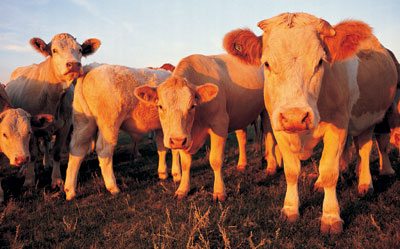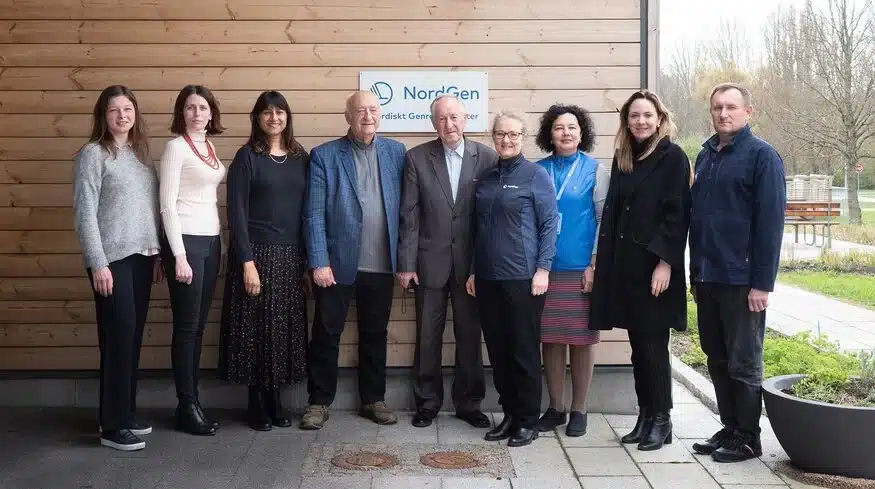Say It Like It Is
The Global Crop Diversity Trust continues to make strides in securing food security in the United States and worldwide.
U.S. President Harry Truman was renowned for being blunt. Reportedly, at a speech to a Washington garden club, he kept referring to the fact that flowers need manure. Now, in those days, even the word “manure” was a little extreme for such ladies, and afterwards one complained to Mrs. Truman. “Can’t you get the President to say ‘fertilizer?’”
“Heavens, no,” Mrs. Truman replied. “It took me twenty-five years to get him to say ‘manure.’”
If there is one thing that gets no respect, it’s fertilizer. There is less serious talk about it than any other topic of legitimate and significant concern to world food security.
Everyone knows that plants feed us and fertilizer feeds plants. But on the rare occasion the topic arises in social conversation it’s as the butt of a joke.
The Joke’s On Us
Nutrient deficiency in farmers’ fields is a major factor limiting global food production. Nitrogen, phosphorus and potassium are the key components for fertilizers. Nitrogen fertilizers are produced through a process that makes heavy use of natural gas, thus availability and price are closely correlated with the energy market. But phosphorus is a different story.
Plants require phosphorus. It’s an essential nutrient for plant growth. Not just important—essential. There is no substitute. Crop yields are thus highly correlated with phosphorus application wherever soils are deficient. And where’s that? Lots of places, including much of Africa, the Near East and Asia.
Why not just keep putting more and more fertilizer on the fields to compensate?
The quick answer is that ‘more and more’ is not going to be available, at least not for long or at affordable prices. Farmers already apply eight times more fertilizer than they did 60 years ago, much of it dependent on non-renewable resources.
Phosphorus for commercial fertilizer is sourced from the mining of rock phosphate. Most countries are importers, and Western Europe and India, for example, are totally dependent on imports. Reserves are concentrated in China, Morocco/Western Sahara, and the United States. But all three sources give cause for concern.
China has recently applied large export tariffs effectively halting exports. Production in Western Sahara may be vulnerable to international restrictions, political pressures and upheaval, as the United Nations considers it an independent country occupied by Morocco. And production in the United States has already peaked and is heading towards exhaustion. To throw in a little extra complication, sulphuric acid is needed to convert the phosphate rock into fertilizer, and its production is also concentrated in a few countries.
While demand for phosphate fertilizer is expected to rise 50-100 percent by 2050, some experts are predicting that production is likely to peak and irreversibly fall within this period, as mines age and in-ground reserves are depleted. Regardless of the date, one thing is sure: over time, demand is going to outstrip supply, and supply will eventually dry up. And when it does, the consequences for food production and food prices are frightening.
No easy solution is on the horizon. Agriculture could try to source its future phosphorus from human and animal waste; however, this would require considerable time, infrastructure and expense, and even a restructuring of farming systems. Few highly productive agricultural systems dependent on mined phosphate would be prepared for what this implies. And many low-input, low-productivity systems are demonstrably ill equipped to implement such a ‘solution’ on a large scale or they would have done so long ago.
Yet, as so often in agriculture, hope lies on genebank shelves. Crops show great genetic variation in the efficiency with which they use phosphorus, and so more efficient use of phosphorus holds great promise even if it cannot be a total solution. More and more, plant breeders will be turning to genebank collections for help in breeding new crop varieties that make better use of phosphorus and other nutrients. Indeed, large strides have been made already.
But much more needs to be done to ensure that the genebank collections themselves are secured and that such far-sighted breeding work is supported. If we want our crops to be more efficient users of phosphorus when global production levels begin to fall, we need to start now with screening genebank collections and crop breeding programs.
Squeamishness, and the notion that ‘fertilizer is boring’, tend to silence serious consideration of this long-term threat to food production. We can ill afford such daintiness. Surely if Truman were here (with his wife) he would tell us to dispense with the verbal ‘Bull Manure’ and get to work on the real manure problem. Or something along those lines.
Editor’s Note: Reprinted with permission from the Global Crop Diversity Trust












